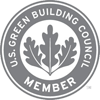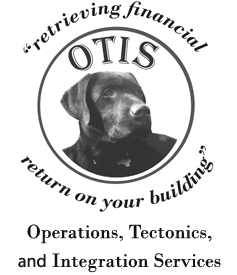|
At OTIS, we work with building owners, developers, contractors, architects, and engineers to steer projects towards efficiency and sustainability, with qualification for various incentive programs being a key goal. A smarter building is not only green in an environmental sense, but also more profitable. Our process involves:
We provide the certifications and documentation required by incentive programs for redemption. These documents also serve as an audit trail, demonstrating compliance with applicable incentive program guidelines. Increasing energy efficiency and employing sustainable building practices can be considered noble feats, but only at the degree to which such measures are feasible for a building owner. “Green” in our mind not only refers to minimizing environmental impact, but also to financial considerations. Incorporating energy efficient measures into buildings reduces operating costs and can qualify a project for immediate and substantial financial returns. Whether you are renovating an existing building or constructing a new one, direct financial incentives are available that can increase return on investment. Incentives include tax credits and deductions, grants, and utility rebate programs. These initiatives also carry marketing value, allowing a building owner to showcase their business as being “green”. Call on OTIS for assistance in steering your project towards eligibility for incentive programs, ROI projections, and the certifications and documentation required to redeem incentives. | ||
 |
Lighting - $0.60/s.f. tax deduction – Recent advances in lighting technology make it relatively easy to qualify for the lighting incentive. Standard equipment installed utilizing a sensible design results in energy savings while maintaining sufficient lighting levels. We find that many buildings qualify for this incentive retroactively; meaning that typical lighting installations made back to 2006 can qualify with no additional investment in equipment. We’ve seen the value of this incentive alone stretch into six figures.
Return To Top |
 |
Building Envelope - $0.60/s.f. tax deduction – Minimal increase in building insulation beyond today’s enforceable building codes will often qualify a project for the building envelope incentive. Reflective roof membrane and efficient window technologies are a sampling of other measures that are beneficial.
Return To Top |
 |
Accessibility Improvements - $5,000 tax credit, $15,000 tax deduction thereafter – Many aspects of building design and renovation take into account accessibility for the disabled through compliance with ADA. Expenditures for such compliance can be offset with applicable tax incentives in many cases.
Return To Top |
 |
HVAC - $0.60/s.f. tax deduction – A number of variables can be adjusted in a building design to achieve the threshold of efficiency necessary to qualify for the HVAC incentive. Qualification for the lighting and building envelope incentives inherently makes qualification for the HVAC portion more feasible.
Return To Top |
 |
Residential Incentives - Numerous residential incentives exist and are ever-changing and evolving. Tax incentives are generally smaller in size than are their commercial counterparts, but increasing the energy efficiency of your home is one of the most effective ways to stretch your family budget. OTIS can help.
Return To Top |
 |
Geothermal - ROI in as little as 2 years – Geothermal heating and cooling systems are extremely efficient, and initial costs are largely offset by grants and tax incentives. Employing similar technology as the vapor compression A/C and heat pump, a geothermal system uses the constant temperature of the earth to exchange heat rather than the air. The result is higher, more consistent level of efficiency and therefore lower operating costs.
Return To Top |
 |
LEED Certification - Marketing Value – LEED is clearly recognized nationally as the gauge by which to measure the effectiveness of sustainable building practices. Upon certification, a LEED plaque on a building is an unparalleled marketing tool. Relatively complex in nature, the LEED certification process is made much easier by retaining OTIS as your LEED consultant.
Return To Top |
 |
Solar Energy - ROI in as little as 3 years – Solar technologies were once too expensive for most projects. With a myriad of incentives ranging from tax credits to utility buy-back programs, this once exotic item is now more feasible than ever. Of particular interest are programs where utility providers buy electricity that your building produces at a higher rate than what you pay them for the electricity that you consume. Solar systems have ROI timeframe of as little as 3 years, with significant profit stream thereafter.
Return To Top |

| ||
|
Markus Chady has a wide breadth of experience in the construction and design professions. His first job in construction was with an HVAC contractor during summers while in high school. Chady then took a full time position with a fireplace and chimney construction company while attending business classes part time. After 8 years working at that company, and with diminishing interest in the study of finance, he left West Tennessee for Knoxville, changed his major to architecture and refocused. Chady earned a professional degree in architecture while operating a fireplace and chimney business of his own. After selling that company, he spent 4 years in an architecture firm, bringing his experience in construction to benefit his role as a project manager. Seeing a niche opportunity pursuing financial incentives for construction, Chady started O T I S. His focus is consulting with building owners and fellow design professionals to steer projects towards maximum efficiency within parameters of feasibility, and qualification for financial incentives. He continues to seek out ways in which he can blend his experience in construction, education and experience in architecture, and passion for a sustainable built environment. Return To Top | ||















